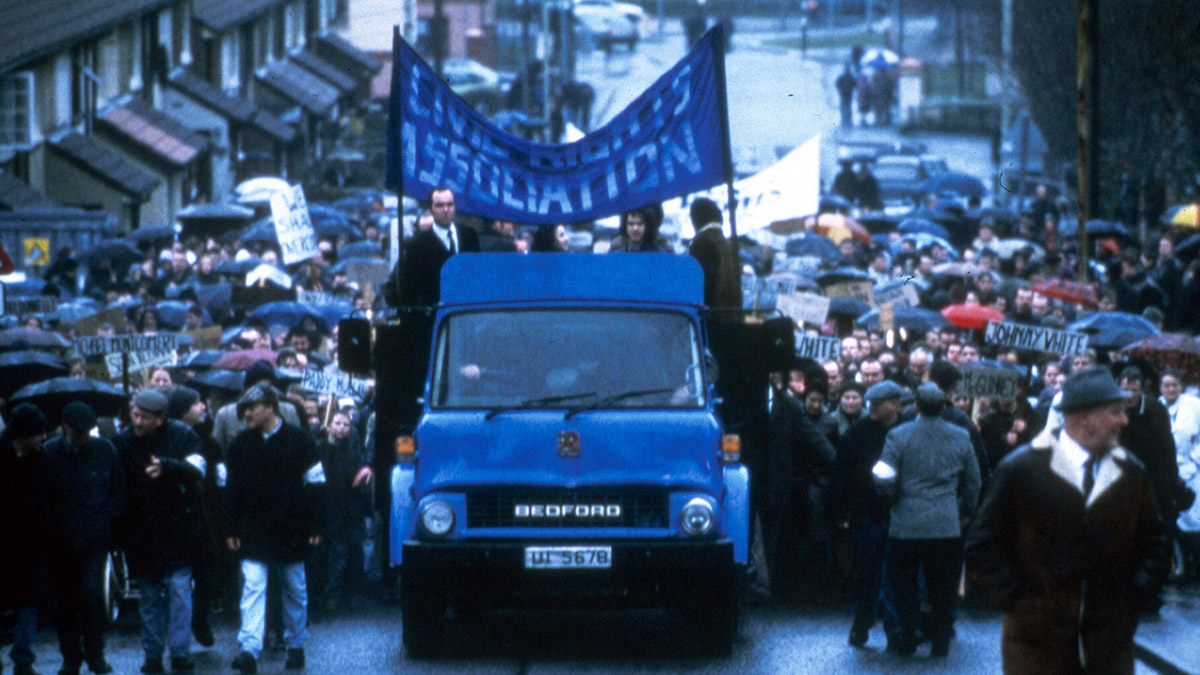
(c) Photofest / Getty Images
How was the vivid sense of reality that overwhelmed everyone who watched Bloody Sunday created?
2022.06.27
"Bloody Sunday" synopsis
Bloody Sunday happened on January 30, 1972 in Londonderry, Northern Ireland under British rule. On the day of the incident, there were calls for a demonstration march in protest against the British government's policies regarding civil rights. The action, which was supposed to be carried out peacefully, turned into a tense situation when they were confronted by British troops who were keeping an eye on their movements, and the sound of gunshots soon began to ring out, leaving many unarmed civilians injured and 14 people injured. It turns into a disaster that causes many deaths.
Index
- A masterpiece that made the master artist Greengrass famous.
- examine what happened that day
- “Reliving” history in which both parties participated
- Actors and extras simply live in the moment
- A masterpiece that continues to resonate even after the end credits
A masterpiece that made the master artist Greengrass famous.
The Jason Bourne series, which began in 2002, is often said to have revolutionized Hollywood cinema. Among them, the impact brought about by the camera work in the second film, `` The Bourne Supremacy '' (2004), was tremendous. In this unprecedented sense of realism, which seems to be a combination of action, suspense, and documentary, we are pulled from the position of bystanders into the center of the incident, and even if we can say that we have become "witnesses" to the whole story. It's not too much to say.
The film was directed by Paul Greengrass, a British filmmaker who also has a background as a journalist. The work that first made his name known was ``Bloody Sunday'' (2002), which was made as a TV movie and received high acclaim at the Sundance and Berlin Film Festivals.
"Bloody Sunday" preview
As we unravel this work, which celebrates its 20th anniversary this year, we are reminded that the ``suffocating atmosphere'' that would later become Greengrass' signature was already established at this point.
examine what happened that day
The film depicts the events of Bloody Sunday, which took place on January 30, 1972 in Londonderry, Northern Ireland under British rule.
On the day of the incident, there were calls for a demonstration march in protest against the British government's policies regarding civil rights. The action, which was supposed to be carried out peacefully, turned into a tense situation when they were confronted by British troops who were keeping an eye on their movements, and the sound of gunshots soon began to ring out, leaving many unarmed civilians injured and 14 people injured. It turns into a disaster that causes many deaths. An investigation conducted immediately after the incident also yielded one-sided results that lacked any sense of neutrality or legitimacy. It is said that this response provoked intense anger across Ireland and caused the Northern Ireland issue to become even more serious.
In the first place, Paul Greengrass decided to make a film about this incident after coming across a book. As he reads Eyewitness Bloody Sunday (1997), a book written by writer Don Mullan about a series of incidents, Greengrass begins to feel as if he were at the scene of the crime, frantically dodging bullets and running away. It is said that it was wrapped in Driven by the urge to make a film out of this subject, he immediately met with author Malan and requested his cooperation. They will explore the direction of making the film into a movie by meeting with people who knew what happened in 1972 and the families of the victims.

